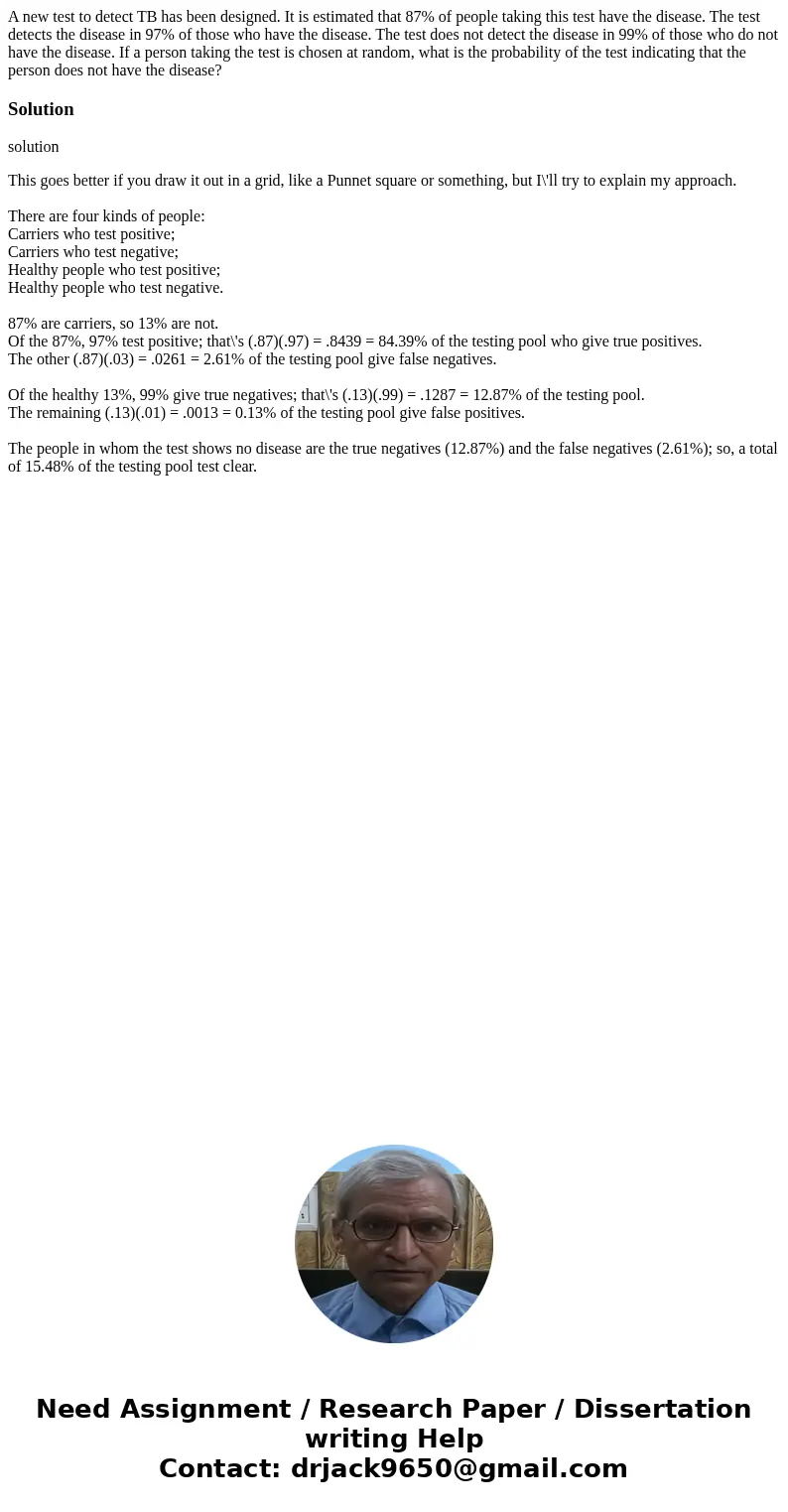A new test to detect TB has been designed It is estimated th
A new test to detect TB has been designed. It is estimated that 87% of people taking this test have the disease. The test detects the disease in 97% of those who have the disease. The test does not detect the disease in 99% of those who do not have the disease. If a person taking the test is chosen at random, what is the probability of the test indicating that the person does not have the disease?
Solution
solution
This goes better if you draw it out in a grid, like a Punnet square or something, but I\'ll try to explain my approach.
There are four kinds of people:
Carriers who test positive;
Carriers who test negative;
Healthy people who test positive;
Healthy people who test negative.
87% are carriers, so 13% are not.
Of the 87%, 97% test positive; that\'s (.87)(.97) = .8439 = 84.39% of the testing pool who give true positives.
The other (.87)(.03) = .0261 = 2.61% of the testing pool give false negatives.
Of the healthy 13%, 99% give true negatives; that\'s (.13)(.99) = .1287 = 12.87% of the testing pool.
The remaining (.13)(.01) = .0013 = 0.13% of the testing pool give false positives.
The people in whom the test shows no disease are the true negatives (12.87%) and the false negatives (2.61%); so, a total of 15.48% of the testing pool test clear.

 Homework Sourse
Homework Sourse